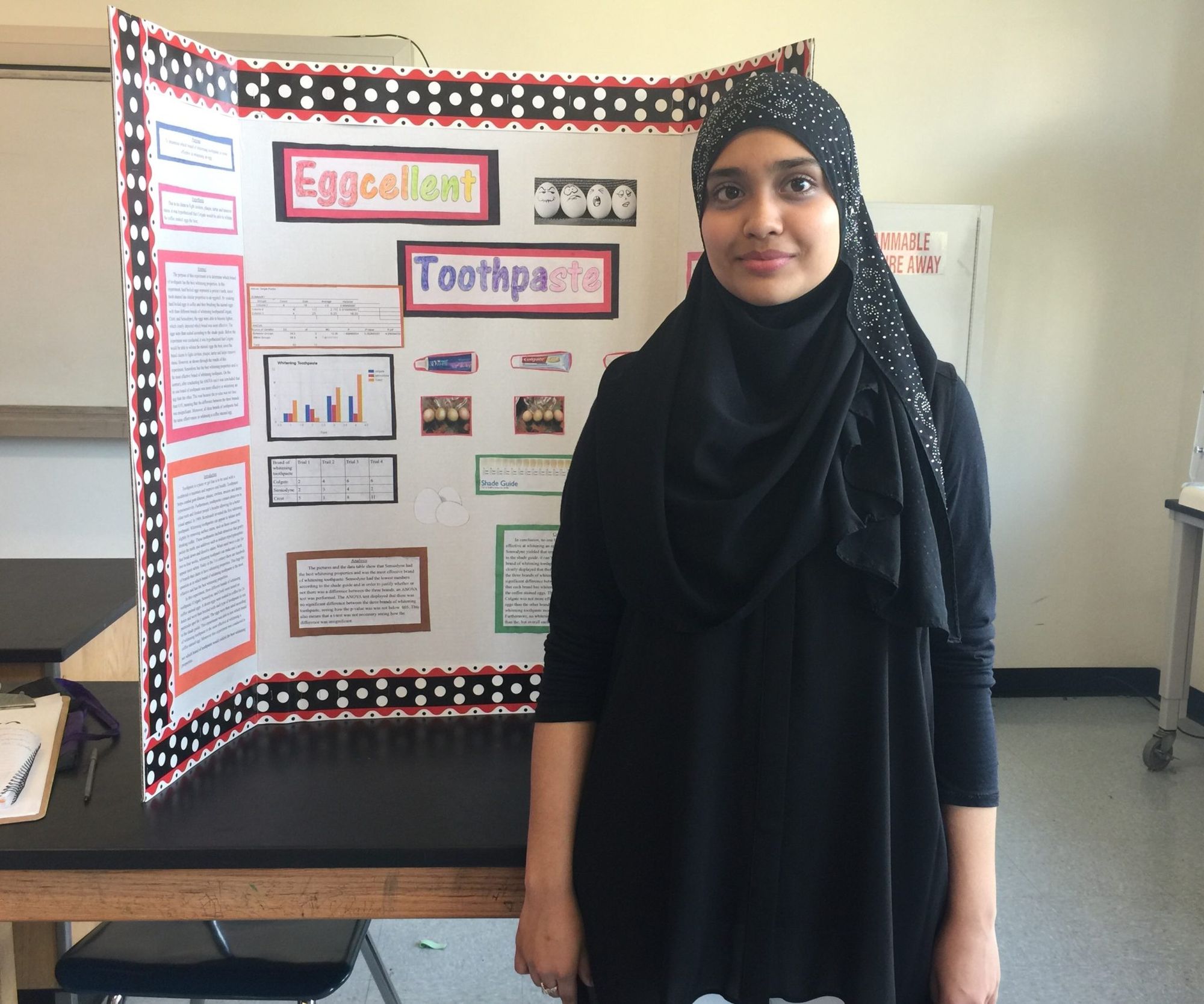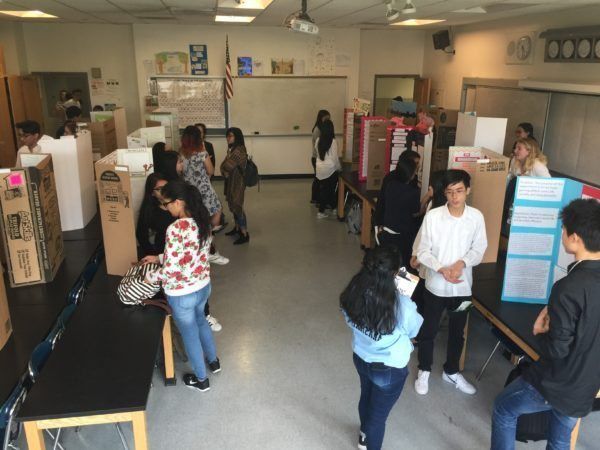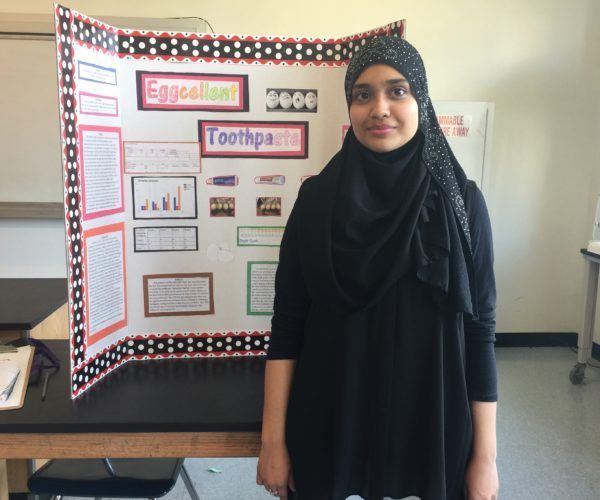10th Annual Midwood HS Science Fair – A Glimpse


Midwood High school is known for many things: its population (close to 4,000 students), its clubs (close to 30), and its science research program- better known as Midwood Science Research. And on May 24, the program held its 10th annual science fair.
Students in the Midwood High School Medical Science program choose a track to follow during their sophomore year. This year, there were 69 science projects created by 100 sophomore students (the option to work in pairs was available). About 110 judges consisting of alumni’s, teachers, and upperclassmen (juniors and seniors from the research program) judged the entries. While the winners won’t be announced for a few weeks, here is a look at some of the work that was up for consideration:
“Which is the best whitening toothpaste?”
Bareera Abid, a sophomore presenting at the fair, worked on a project searching for the best whitening toothpaste. To make it more interesting, she used hard boiled eggs to test each toothpaste.
“I wanted to see which toothpaste was the most effective since many companies claim they’re the best,” Abid said. “I’ve been judged two times and it’s very nerve-wracking.”

To test her hypothesis, Abid individually toothbrushed each egg. The project took her three weeks to complete, and she found that no toothpaste was more effective than the other.
Students worked on their projects for a month, getting help from their teachers along the way. Their projects were on topics such as environmental science, biology, and physics. “It’s interesting to see if there are projects that have new scientific, creative ideas that could possibly be used in the future,” said Patrice Sanderson, a judge at the fair who graduated in 2015. “This is my fourth time judging. I judged junior year, senior year, last year, and now.”Stacy Goldstein, a science research teacher, has been teaching the class for three years. And she believes the projects get better and better.
“Students are able to incorporate technology,” Goldstein said. “They get to look at the field of science they’re interested in and explore it.”
“Where Do Lizards Go To Lunch?”
Nicole Demetrashvili and Elizabeth Bronnik worked on a project together that was titled, “Where Do Lizards Go To Lunch?” They wanted to test out brain lateralization- which side of the brain is being used. To do that, they worked with two lizards named Snowball and Suzee.
Demetrashvili and Bronnik set up their phones inside the lizard’s cages, gave them food (crickets) and recorded their movements. In the end, they found that the side of the brain that’s used is not dependent on the species, rather it’s dependent on the specific subject itself.
“By studying the behaviors of animals besides humans, we can hope to gain an understanding of when and how lateralization of brain function evolved,” their board stated.
“This was definitely an interesting experience,” said Mahmoud Abouelkheir, a Midwood High School senior who was judging at the fair.
As part of Midwood Science Research, students who decide to continue with the program, are required to take their projects out in the real world. Meaning, they must find a laboratory to work in and conduct their own research project while working with professors and scholars.
According to its website, “Projects last from 5 to 15 months and students put in hundreds of hours at their work sites.” During senior year, students write up a research paper, and present their findings at various competitions throughout the city, including the New York City Science and Engineering Fair (NYCSEF), and St. Joseph’s College High School Poster Session.
Abouelkheir was among the few to win first place at NYSEF, as well as an Intel ISEF (Intel International Science and Engineering Fair) award this year.
His winning project? “Intra-microcolony spatial positioning affects antibiotic susceptibility in Neisseria gonorrhoeae.”“It was a life-changing experience, possibly the greatest honor of my life” Abouelkheir said. “Everyone there was so passionate about science, and I learned so much.”
Abouelkheir wholeheartedly believes that his time at Midwood Science Research helped prepare him for the future. Next Fall, he will be attending DePauw University on a full tuition scholarship.